


Uncovering Systemic Failure: A "Rainbow of Frustration"
To move beyond anecdotes and prove the problem was universal, I led a cross Canada discovery phase, synthesizing feedback from 15 advisors across five regions through in-depth interviews and contextual observation.
The Affinity Map: Proof of Pattern
The resulting map was undeniable. Each color represented a different advisor, yet their frustrations clustered identically around core themes:
Status Soup: Inconsistent, overlapping status labels made it impossible to gauge an IPS's true state.
Information Black Holes: Critical details (expiry dates, document IDs) were buried, forcing advisors into manual work.
Rigid & Punishing Workflows: The inability to correct minor errors without starting a new document from scratch was a primary pain point.
This wasn't a case of a few dissatisfied users, the "rainbow of frustration" provided tangible evidence of identical, systemic failures impacting advisors everywhere.
Impact Quantification
While qualitative insights dominated, early estimates from advisory teams indicated:
Up to 6 hours per advisor per week spent managing IPS related tasks.
A 30% increase in rework due to incorrect status tracking or missed deadlines.
Frequent manual email reminders used to track expiry dates, indicating broken system notifications.
These figures reinforced the urgency of redesigning the experience not just for usability, but for operational and compliance integrity.
The Journey Map: Pinpointing the Breaking Points
-min.jpg)
Mapping the end-to-end advisor journey exposed the exact moments where the system created maximum friction and operational drag:
At Generation: Anxiety around the irreversible "generate" step, knowing any client requested change would require hours of rework.
During Tracking: The constant context switching and manual tracking required to answer a simple client question: "Where is my IPS?"
At Expiry: The reactive scramble to renew documents, as the system provided no proactive visibility into upcoming expirations.
These artifacts moved the conversation from "users are frustrated" to "we have validated, systemic failures at these specific journey points," providing the clear, actionable foundation for my design strategy.
Pain: The core of the problem was immediately visible in the UI itself. The "before" state was a masterclass in cognitive overload: cryptic statuses, missing critical data, and no clear path to action.
My redesign focused on architecting clarity and empowering advisors with information and tools.
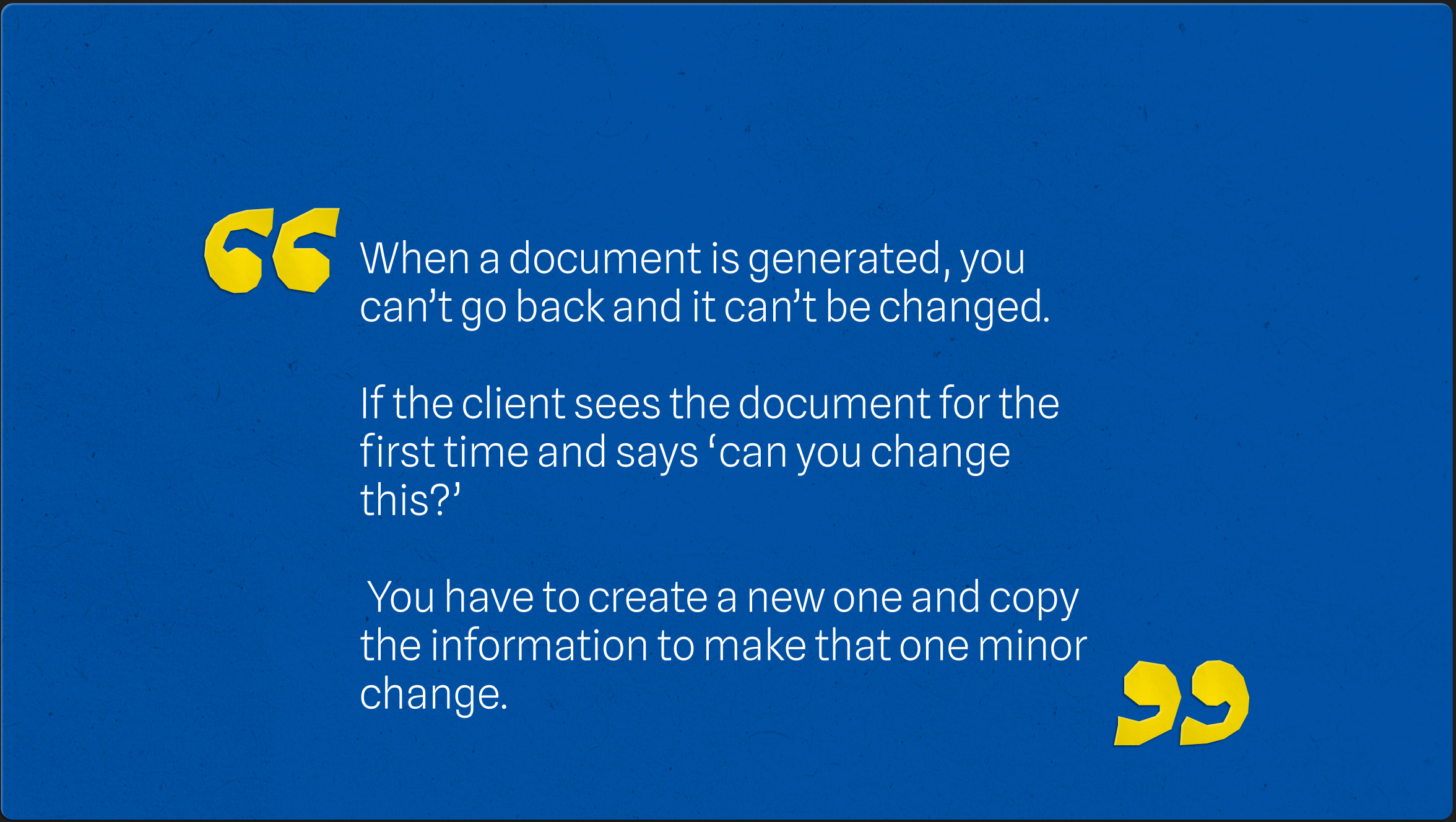
The dashboard became cleaner and faster to use. Advisors no longer wasted time hunting through “status soup.”
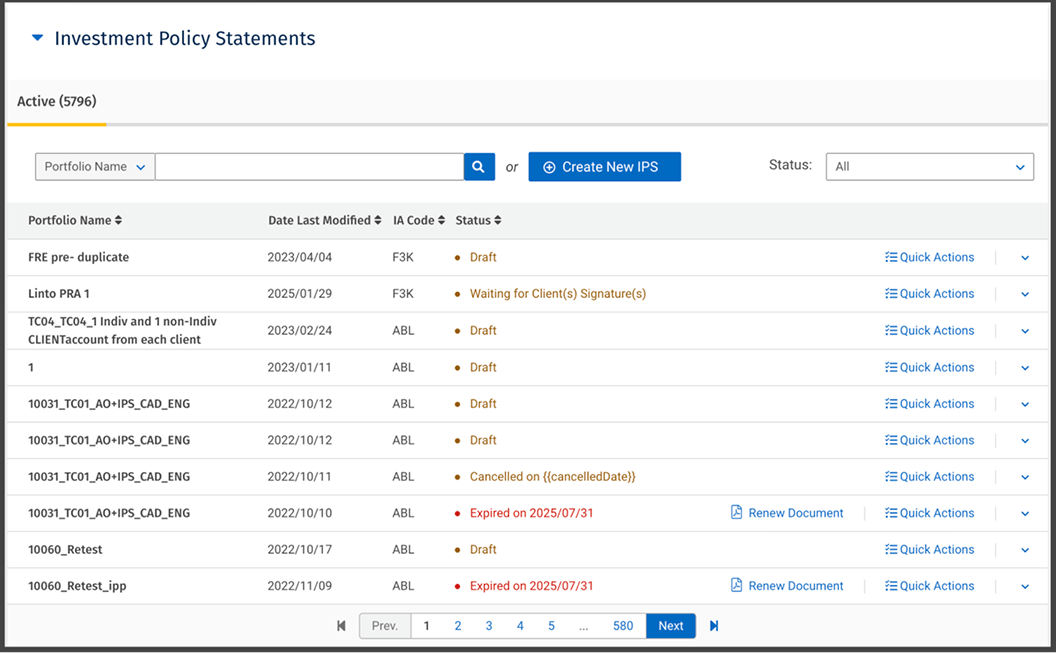
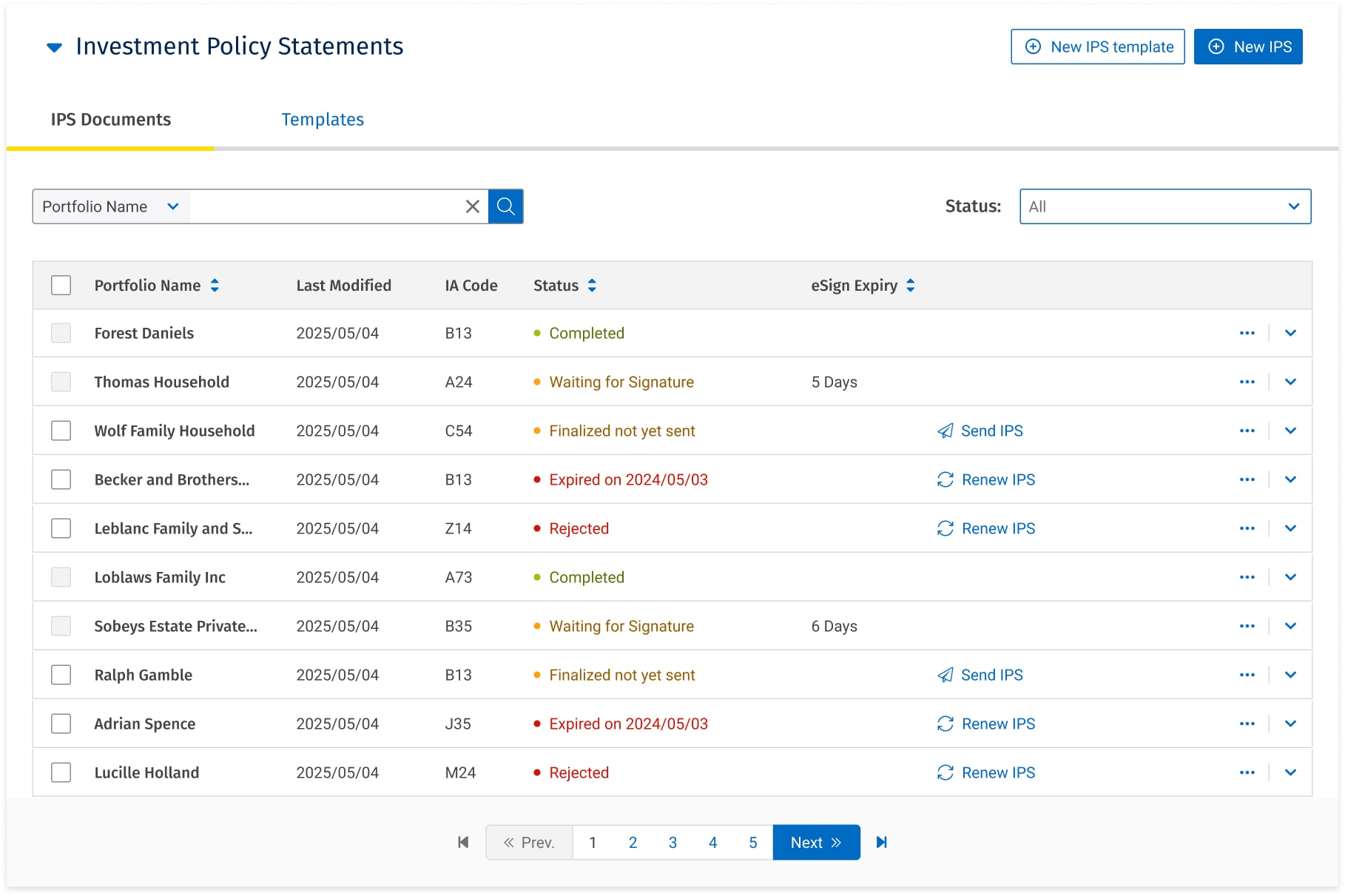
Before dashboard
After dashboard

Simplified status list. Removed and combined similar statuses together for more cohesiveness.
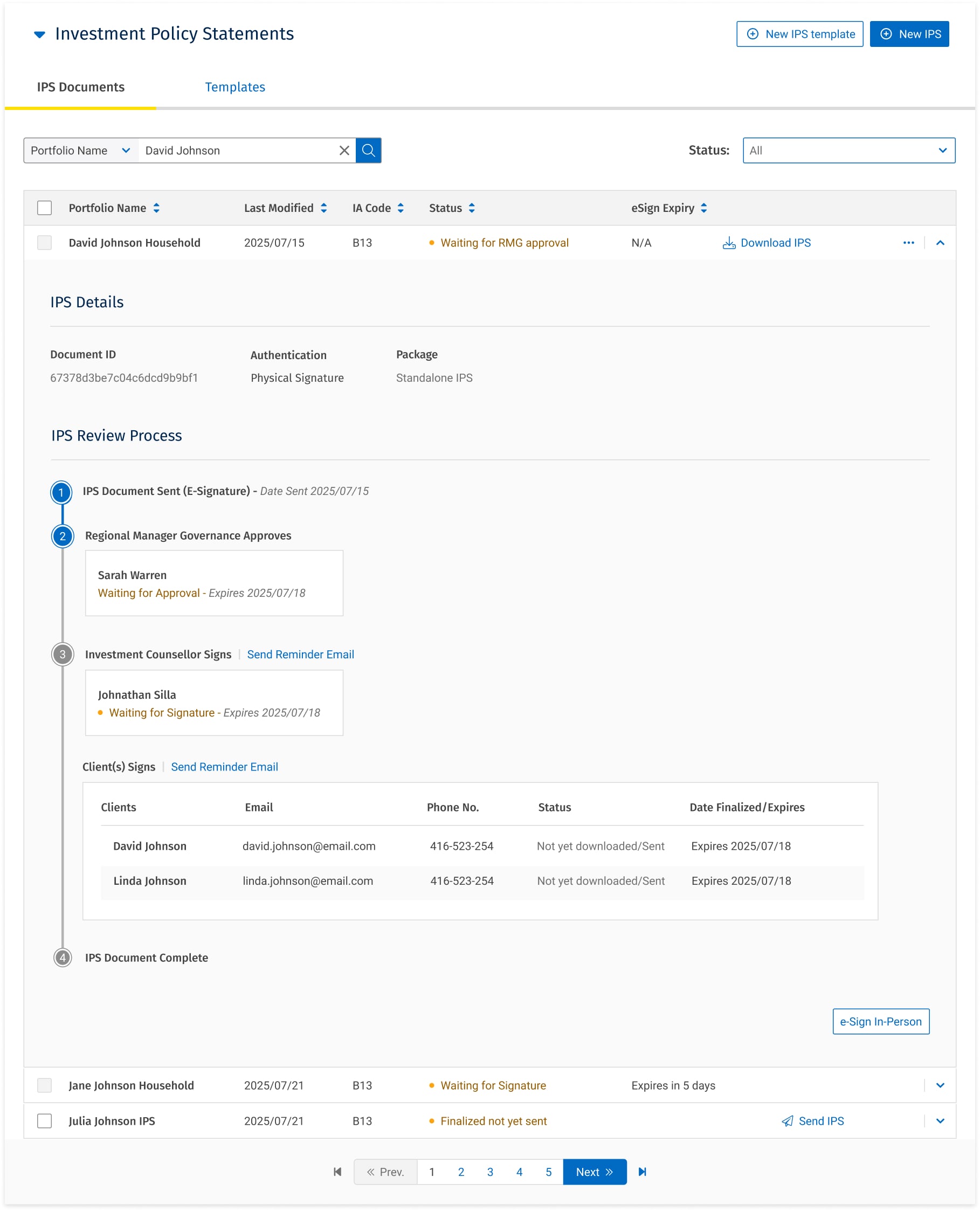
1. Introduce new status (Approved by RMG) so that there is a differentiation of when an IPS has been approved by RMG, and when an IPS has been sent for signing.
2. Signing order of IC and Client to be combined into a single step as documents are sent to both IA/IC and Clients at the same time.
The pain: Beyond the dashboard overhaul, I identified and championed a series of targeted, high impact fixes.
These initiatives were crucial for building immediate credibility with users and demonstrating a commitment to addressing their day to day frustrations.
I prioritized features that delivered disproportionate relief relative to their development effort. This strategy built product momentum and generated user goodwill that was essential for the larger platform transformation.
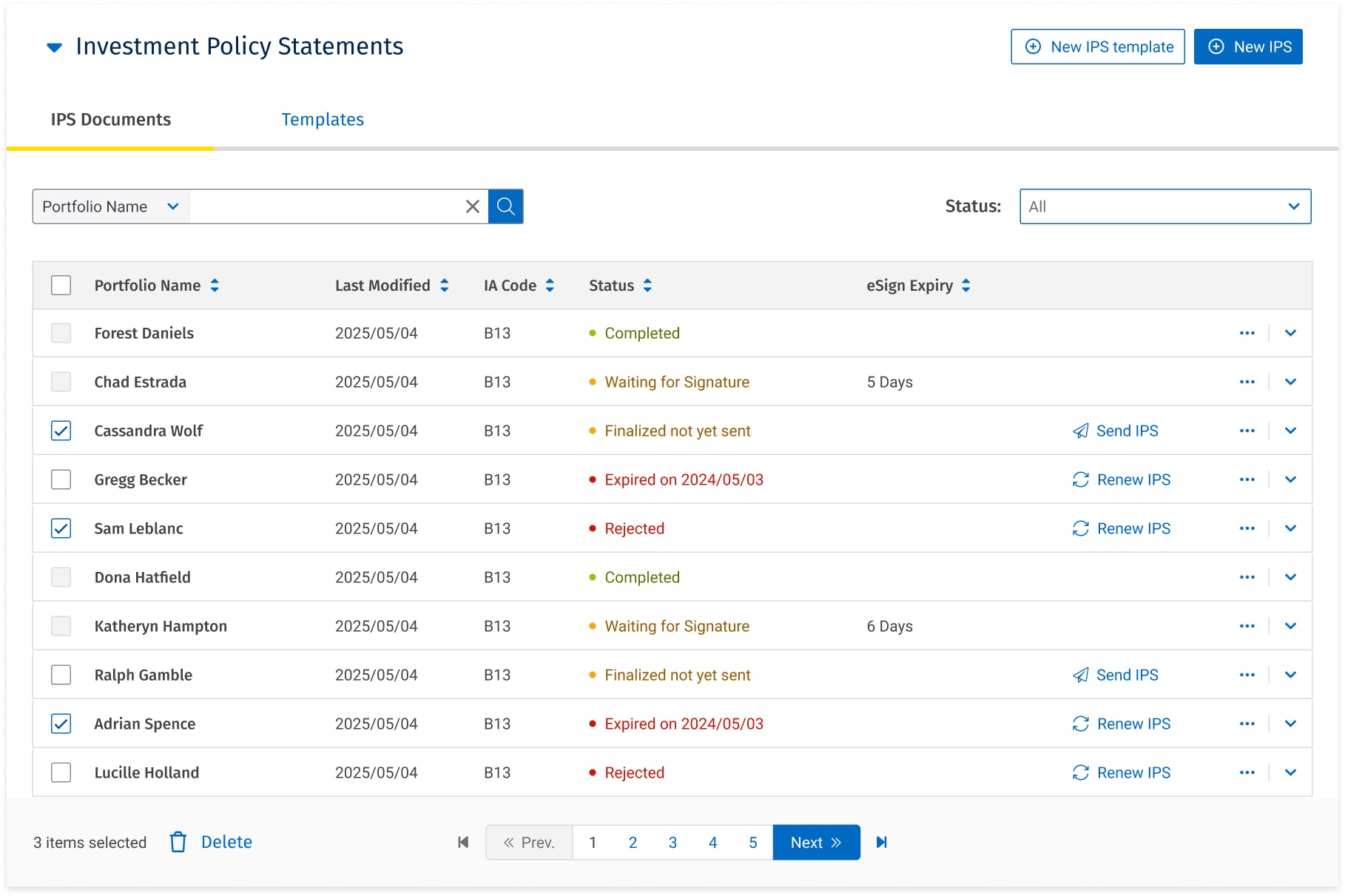

(L) Allow deletion of additional IPS status types. IPSs that cannot be deleted: Completed, Waiting for (any) signature, Migrated
(R) Enable batch delete
The Strategic Pivot: I also identified and documented a strong user need for customizable email notifications, a feature that would allow teams to manage workflows more effectively. This was socialized with product leadership and added to the backlog as a high priority follow up.
Why This Matters: My focus through the project was to balance long term vision with the tactical execution of features that deliver immediate relief and build trust, all while collecting evidence for the next set of strategic priorities.
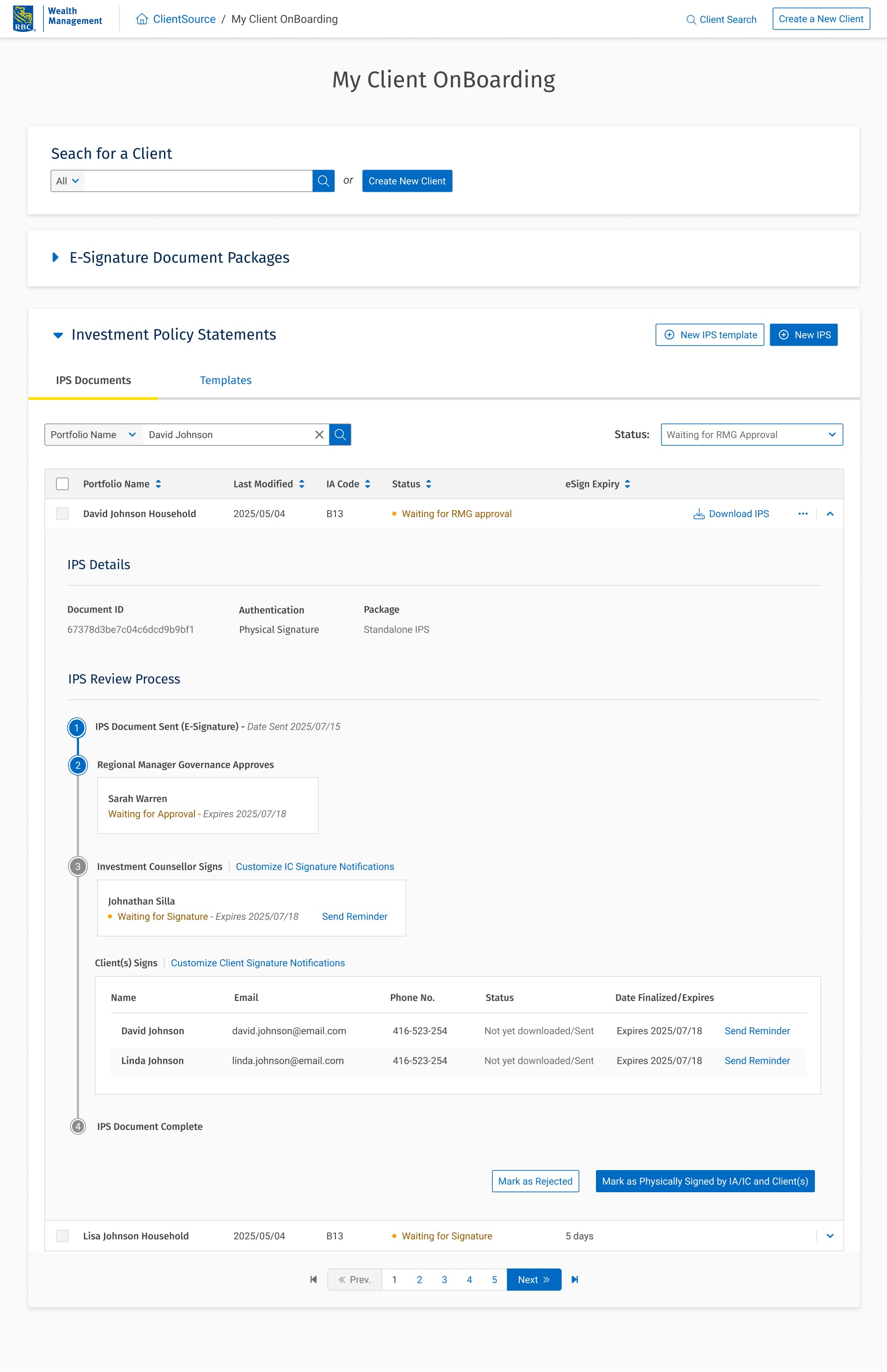

(L) Customize IC signature notifications CTA; (R) display modal with custom settings
Advisor frustrations were not only UI issues but also issues baked into the product's core architecture. The system’s rigidity tying document finalization directly to sending and offering no path for renewal forced advisors into inefficient and risky workarounds.
My role was to diagnose these foundational flaws and design a more flexible and powerful system model.
I spearheaded the design for a new, more flexible IPS architecture that decoupled key actions to grant advisors necessary control.
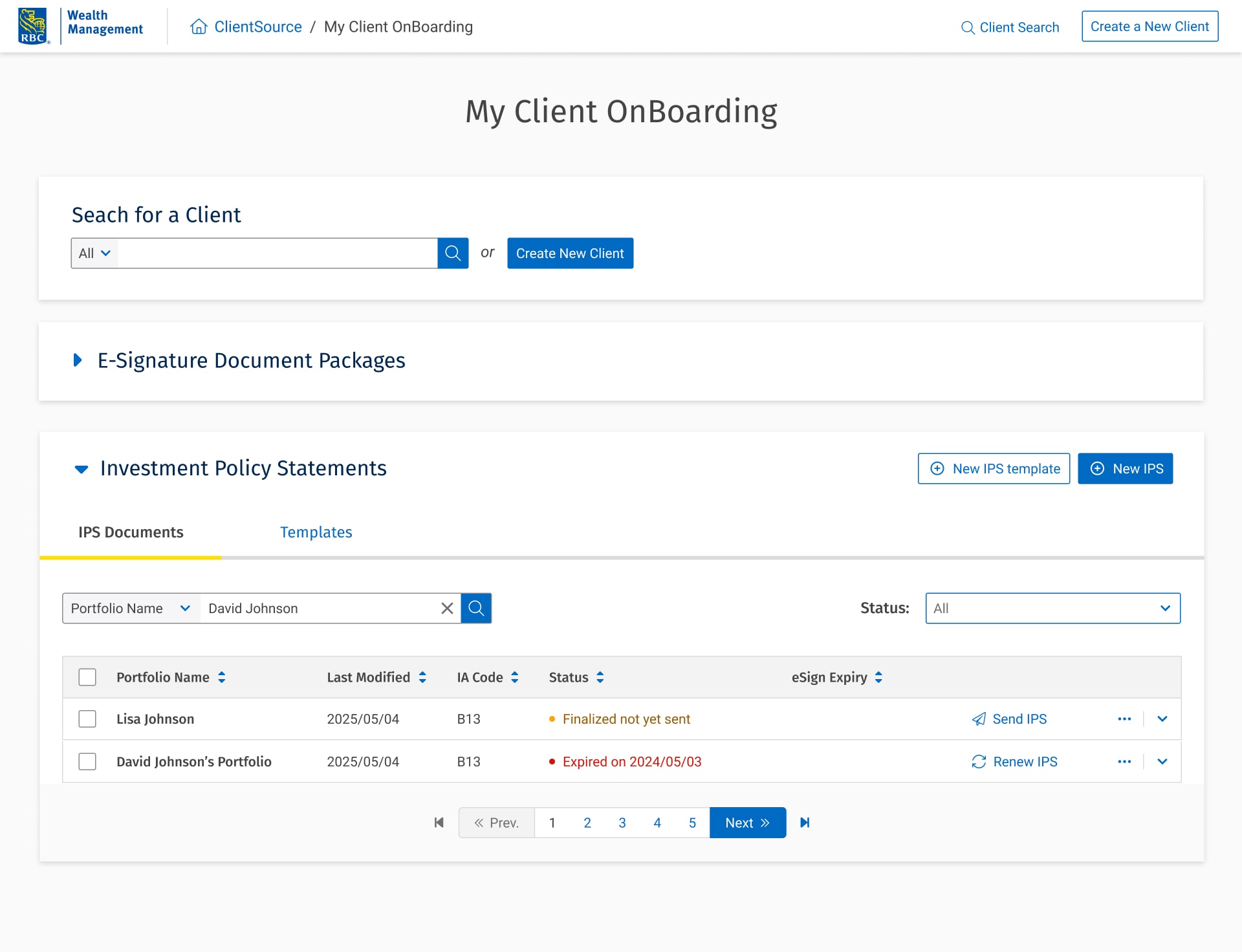
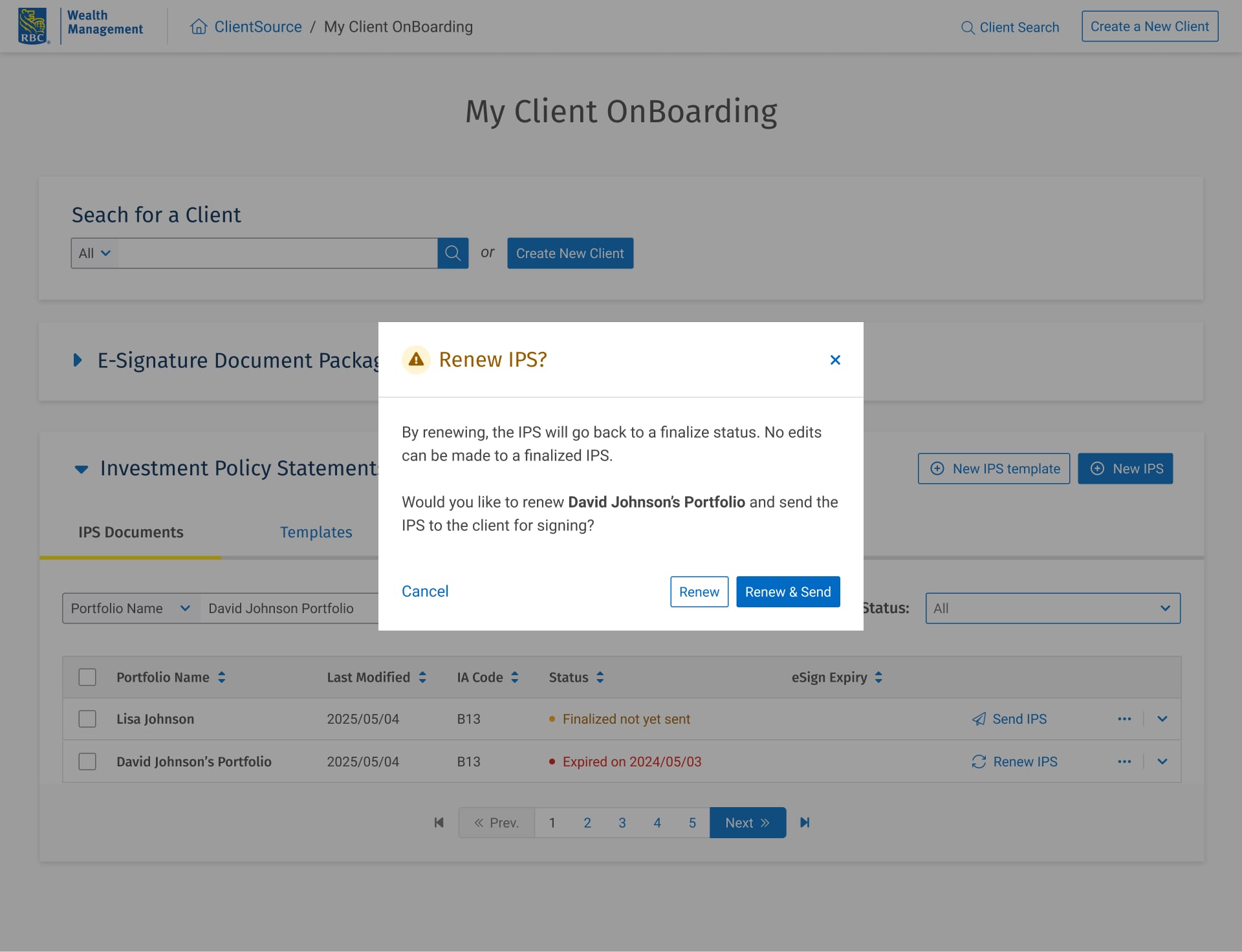
Instead of rebuilding, advisors could simply ‘renew’ an expired IPS.
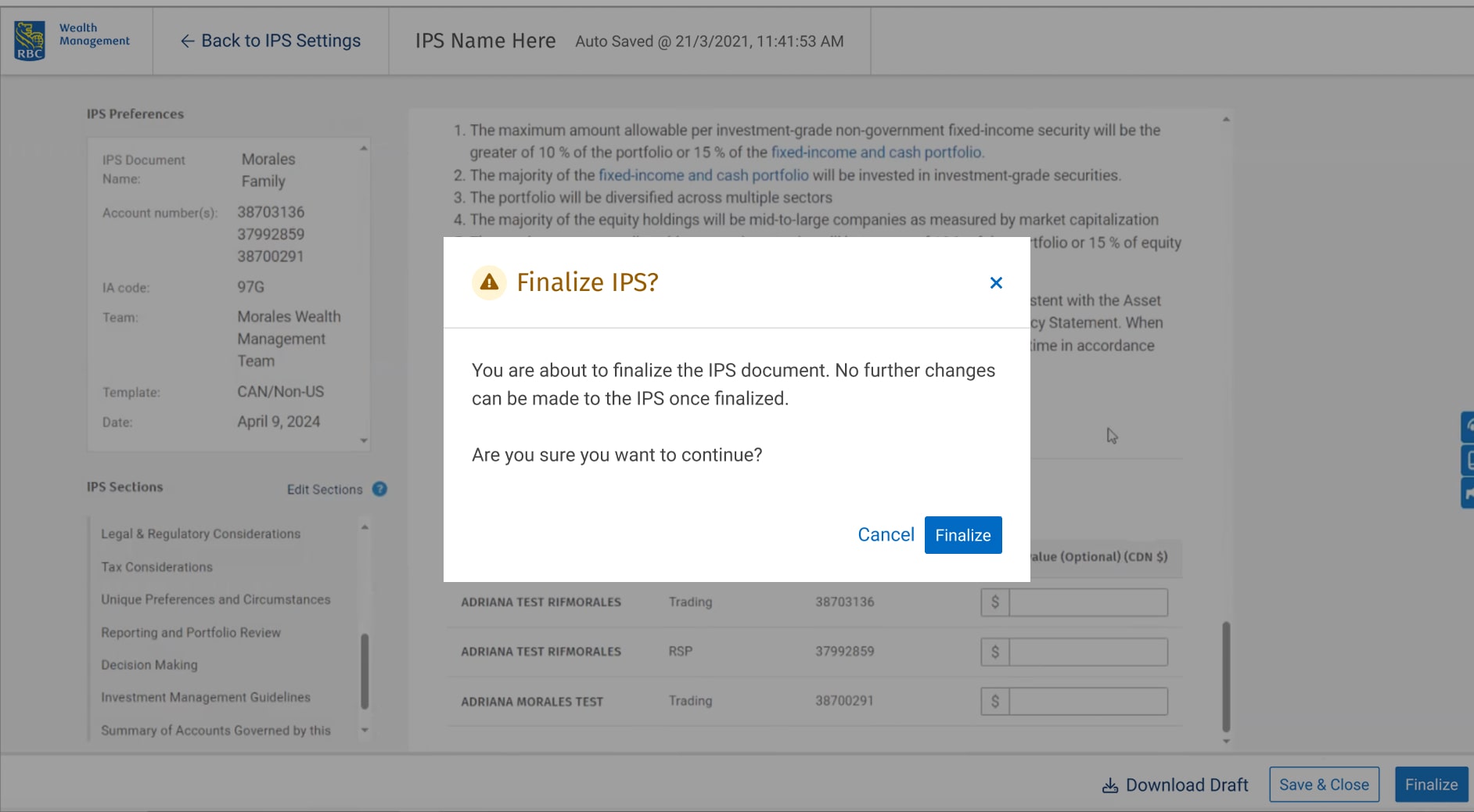

Prep documents without accidentally triggering client emails; Finalize and Send split into distinct steps for clarity.
These designs address the highest leverage pain points in the IPS lifecycle.
While engineered as future state improvements, they represent a necessary evolution of the product's core architecture towards a more flexible, advisor centric model.
They are designed, validated, and ready to unlock significant efficiency gains upon implementation.
Solving today's pain points was only the first step. To create lasting, compounding value, I defined a north star vision focused on scaling advisor efficiency and democratizing expertise through smarter, more reusable systems.
I explored and designed key strategic pillars that address deeper workflow inefficiencies and onboarding challenges.

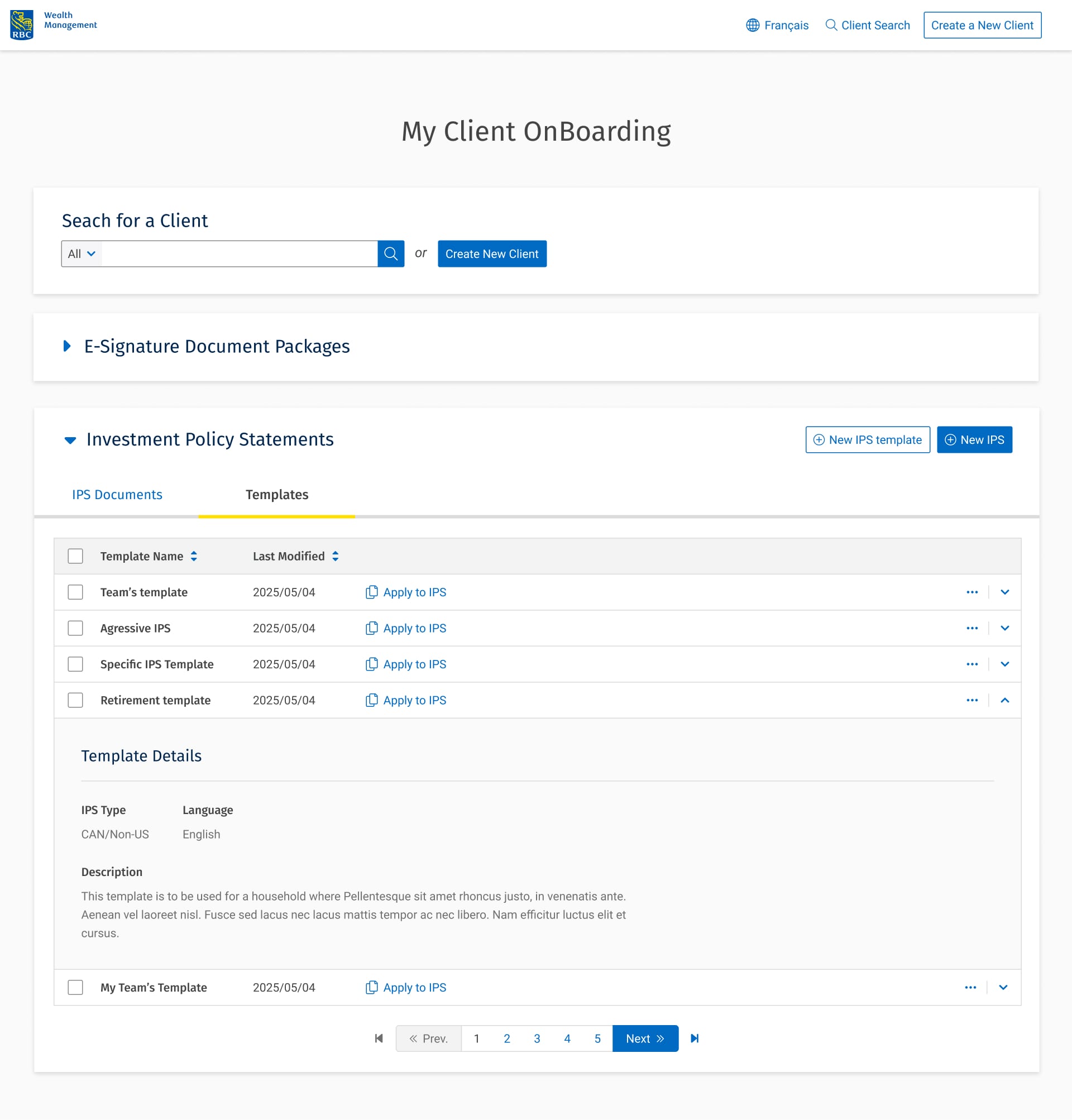
Reusable IPS templates to save hours of repetitive setup.

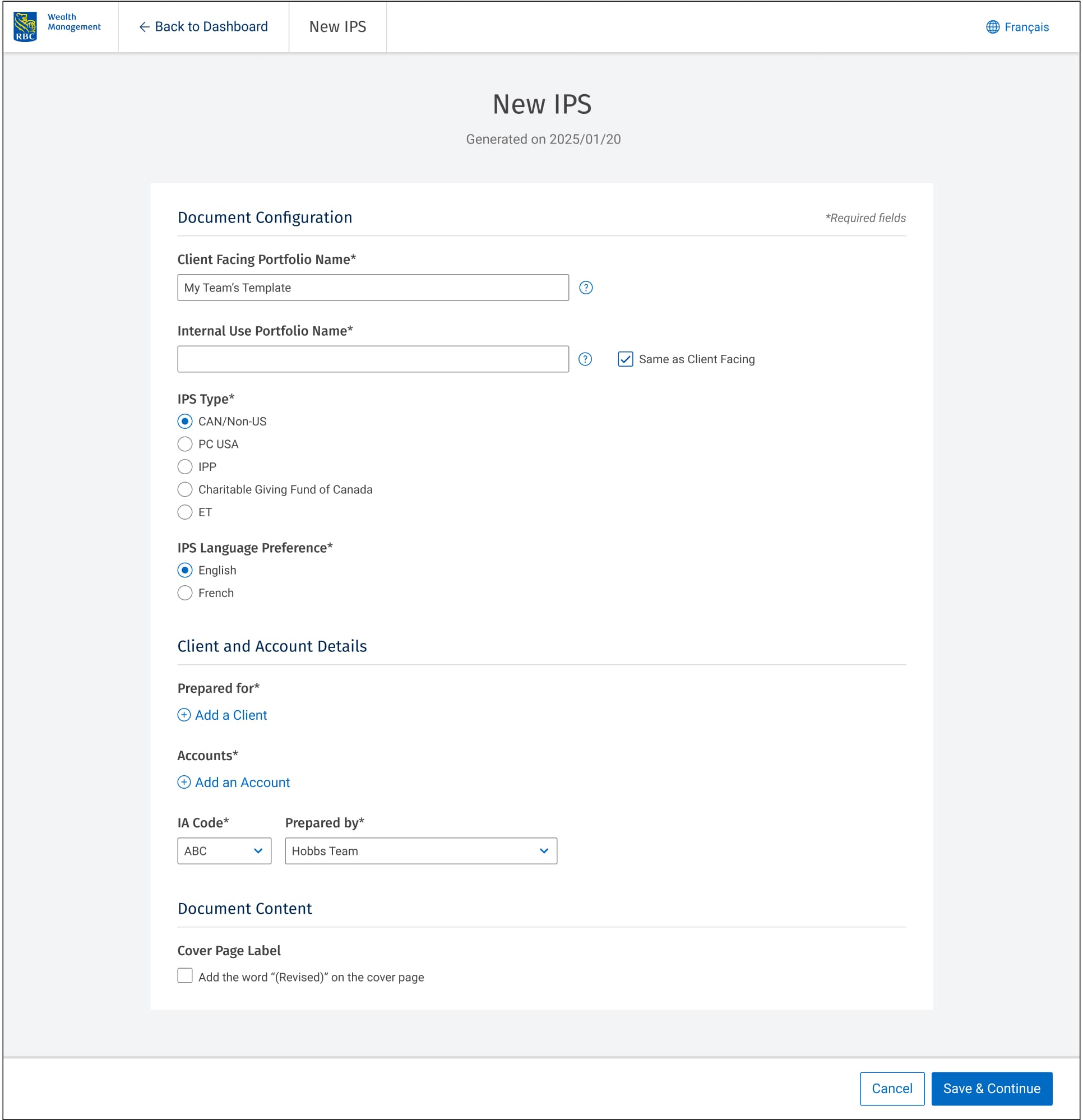
Refined flow shaped by advisors input.
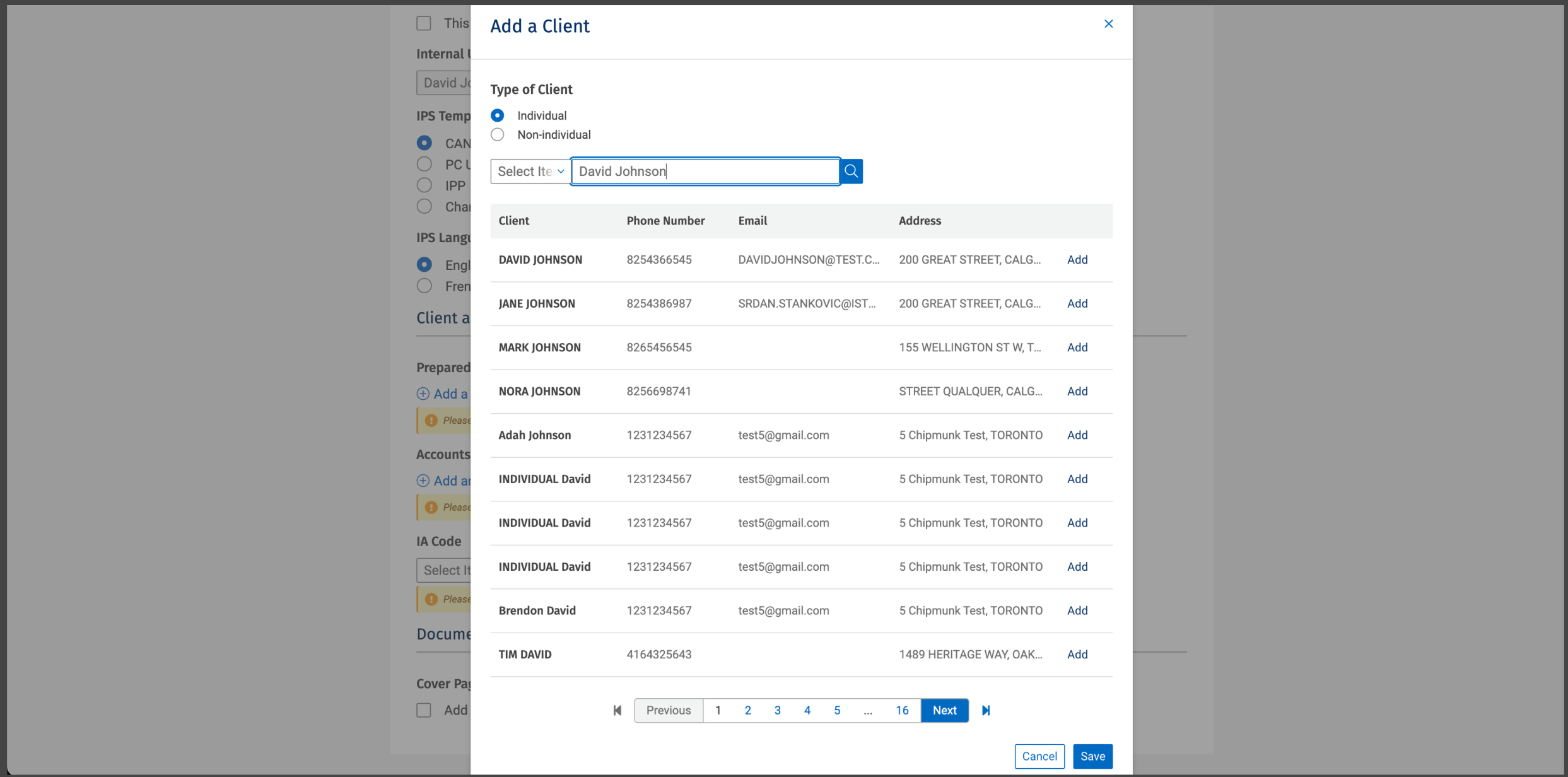
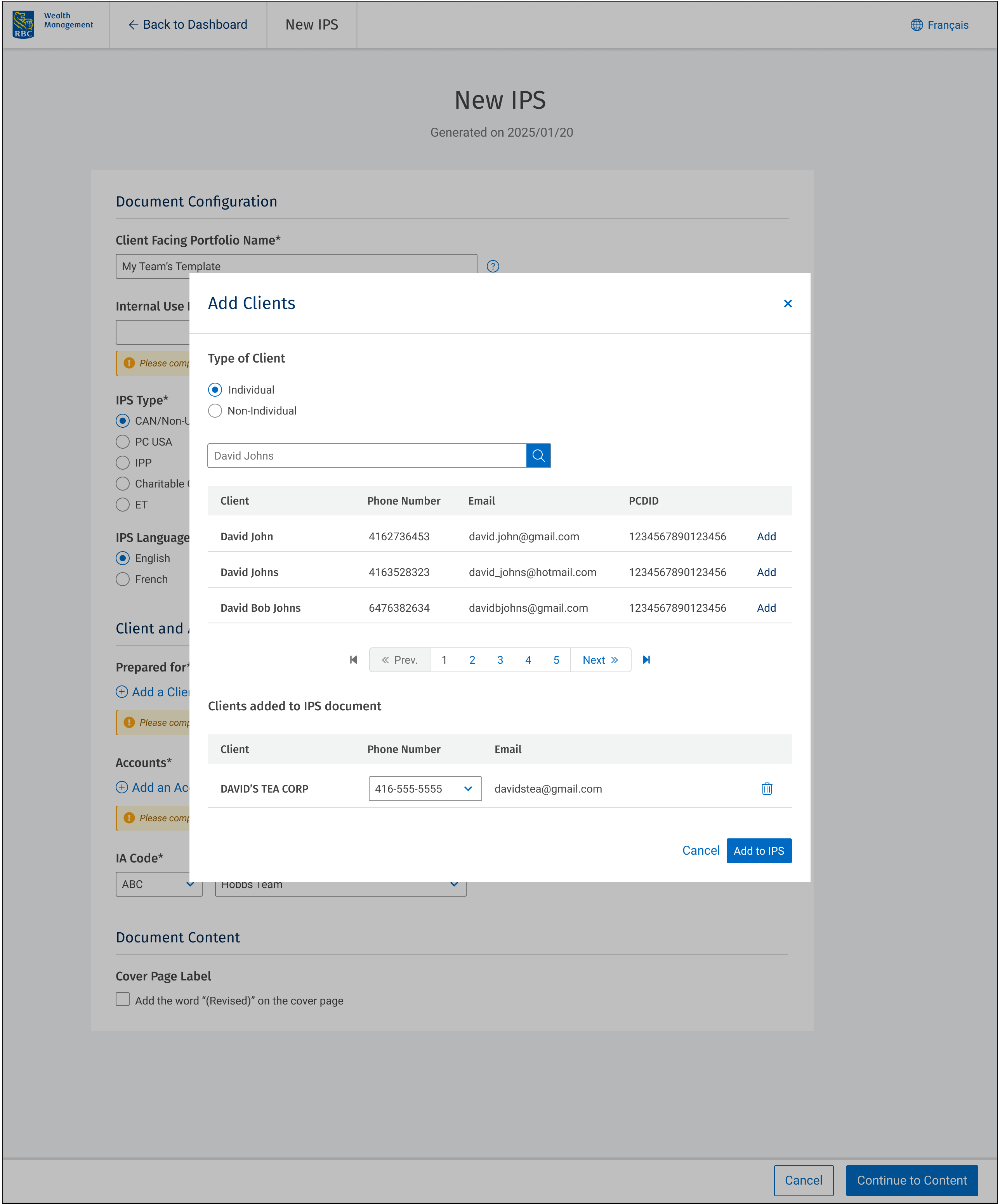
Search redesigned with pagination and multiple contact fields.

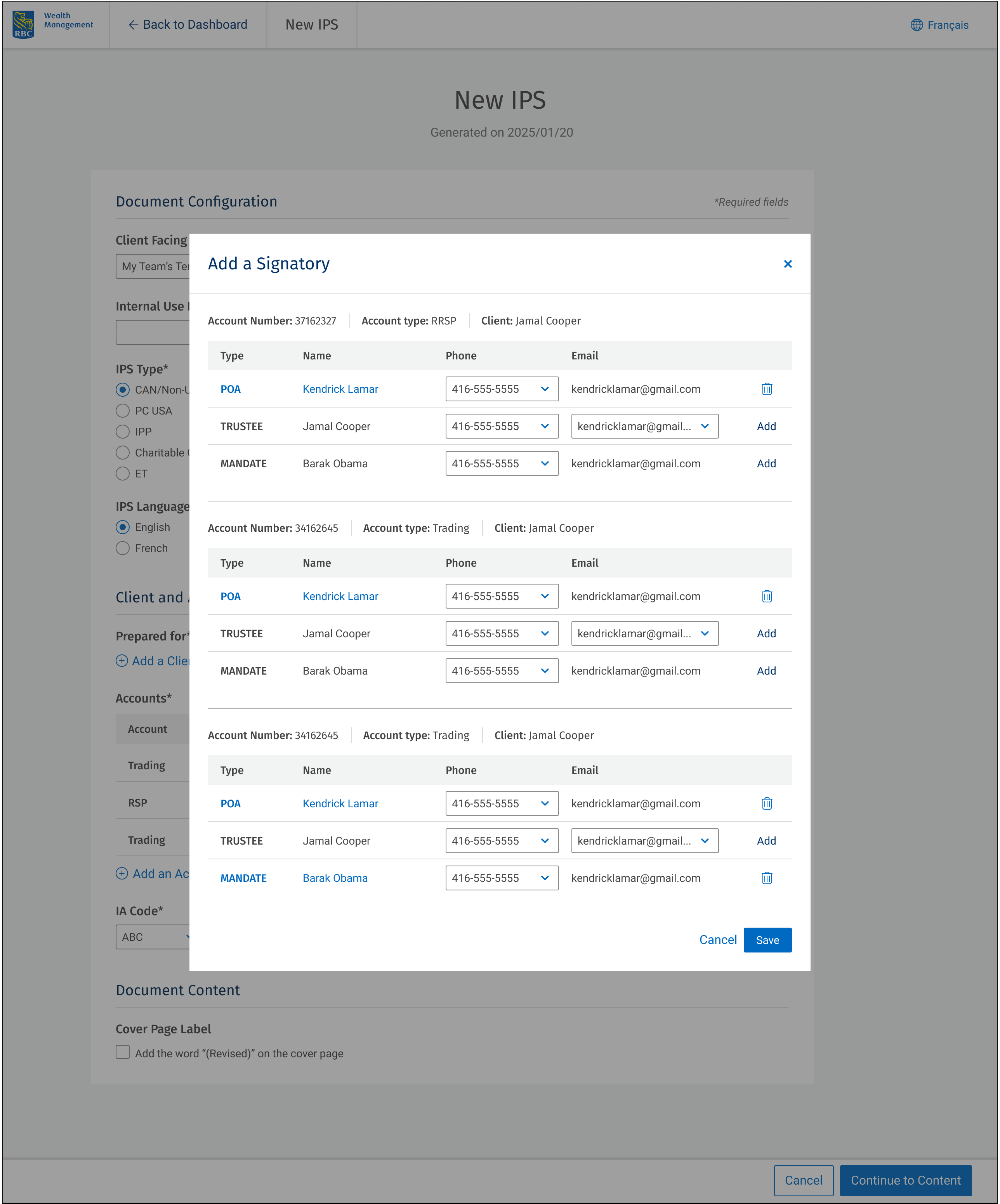
Cleaner flows for linking accounts and assigning roles.
Architecting Foundations
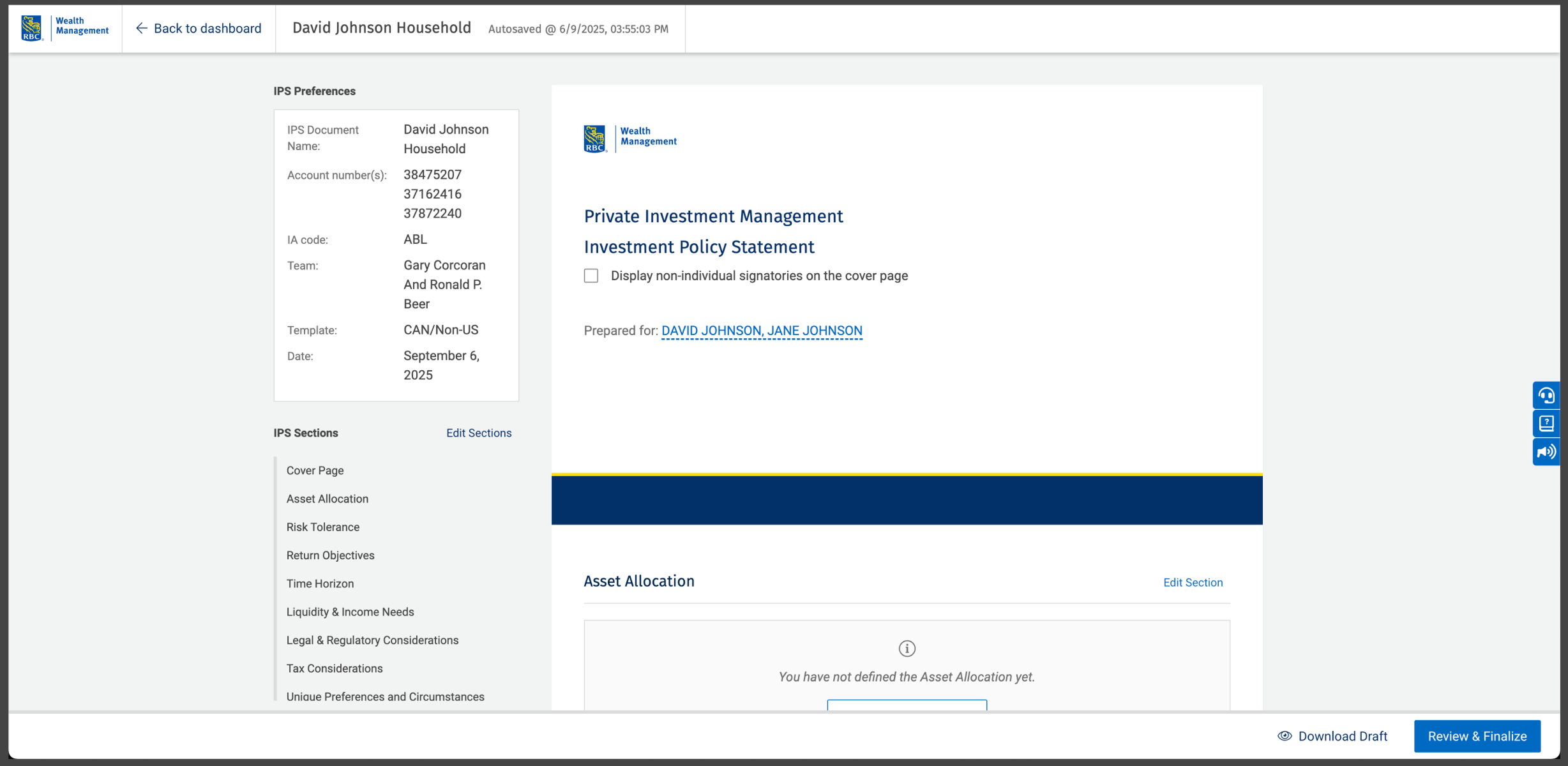

Inline guidance to reduce blank page stress.
Inline Guidance & Best Practices
Reflection: Enterprise design is rarely linear. Priorities shift, timelines slip, and many designs live in “exploratory” mode longer than expected.
For me, the project reinforced that enterprise UX isn’t about perfect processes. It’s about removing friction step by step, while designing a path forward for when the timing is right.